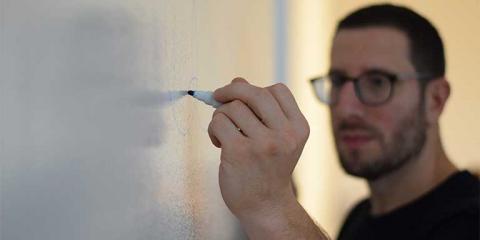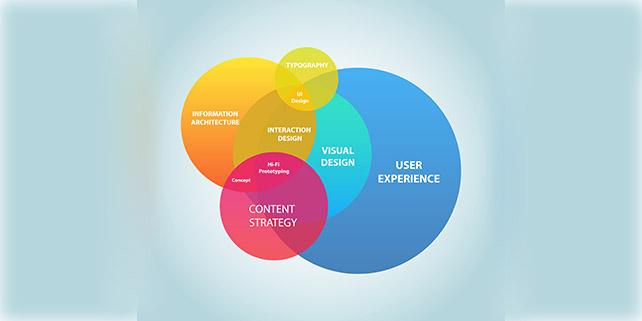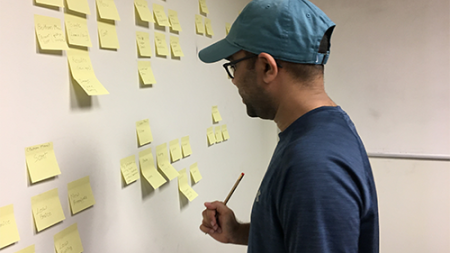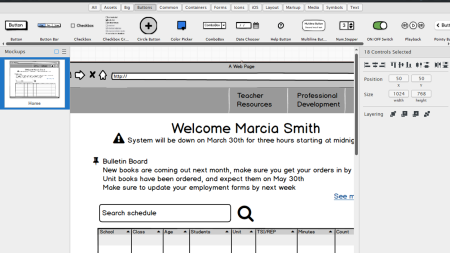
Related Class
Starting a UX Career
- Published on

You can start a career in UX, whether it is your first job as you are entering the workforce, or are transitioning from another role. The route you may take to a career in user experience will depend upon your previous professional experience or academic experience.
If you are just entering the workforce, consider starting with a degree in Human Computer Interaction. This provides you with a broad understanding of how users interface with computers, which is a core foundation in any UX role. If you want to focus more on the interface, a degree in graphic design will be a useful starting point, but you will want to couple this with a UX Certificate or some other formal user experience training or experience. Once you have the foundational academic background:
- Create a portfolio that showcases apps or websites on which you have worked, including wireframes and prototypes so that you can explain the process and design decisions that were incorporated in your work.
- Find an internship in a UX role where you can learn from a practicing user experience professional.
- Seek out a mentor and network with those already working in roles similar to what you are seeking. A UX mentor may be able to provide you with guidance in terms of how to start your career, people with whom you should network, possible job opportunities.
If you already working as a designer or developer, and want to transition into a UX career, you will also benefit from some UX training to assist in the transition:
- Enrolling in a UX certificate program is a good way to obtain a broad understanding of all the skills required to proceed in a user experience role.
- Attend a UX bootcamp if you want to gain skills but do not need assistance with job placement.
- If you you only need a small subset of foundational skills, you can enroll in specific UX courses that can fill-gaps in your knowledge. A course such as an introduction to UX design principles provides a foundation, or you can enroll in highly specific courses such as those that provide an understanding of wireframing or the use of tools for UI creation.
- Join various UX groups, such as the local chapter of your UXPA to take advantage of networking opportunities and educational activities.
While education and training are the starting points for a career in user experience, it is equally important that you network to get a better understanding of the skills needed, and available roles at employers in your area.
About the author
Jennifer Smith is a user experience designer, educator and author based in Boston. She has worked in the field of user experience design for more than 15 years.She has designed websites, ecommerce sites, apps, and embedded systems. Jennifer designs solutions for mobile, desktop, and iOT devices.
Jennifer delivers UX training and UX consulting for large Fortune 100 companies, small start-ups, and independent software vendors.She has served as a Designer in Residence at Microsoft, assisting third-party app developers to improve their design solutions and create successful user experiences. She has been hired by Adobe and Microsoft to deliver training workshops to their staff, and has traveled to Asia, Europe, India, the Middle East, and across the U.S. to deliver courses and assist on UX design projects. She has extensive knowledge of modern UX Design, and worked closely with major tech companies to create educational material and deliver UX workshops to key partners globally. Jennifer works with a wide range of prototyping tools including XD, Sketch, Balsamiq, Fireworks, Photoshop, Illustrator, and Blend for Visual Studio. She also works extensively in the fields of presentation design and visual design.
Jennifer is also an expert on Photoshop, digital image editing, and photo manipulation. Having written 10 books on Photoshop, and having consulted and provided training to major media companies and businesses around the globe.
Jennifer is the author of more than 20 books on design tools and processes, including Adobe Creative Cloud for Dummies, Adobe Creative Cloud Digital Classroom, and Photoshop Digital Classroom. She has been awarded a Microsoft MVP three times for her work with user experience design in creating apps for touch, desktop, and mobile devices. Jennifer holds the CPUX-F certification from the User Experience Qualification Board and assists others in attaining this designation in leading a UX certification course at American Graphics Institute. She is a candidate for a Master’s degree in Human Factors in Information Design.


